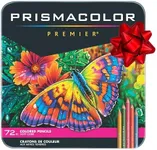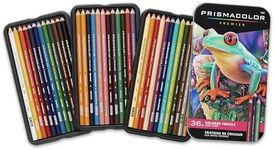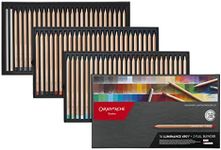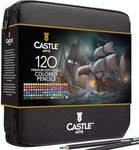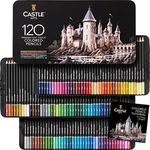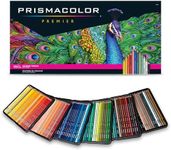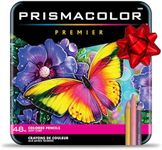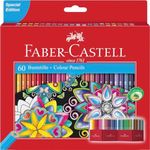Buying Guide for the Best Colored Pencils For Artists
Choosing the right colored pencils for your artistic needs can greatly impact the quality of your work. Whether you are a beginner or a professional artist, understanding the key specifications of colored pencils will help you make an informed decision. Here are some important factors to consider when selecting colored pencils for your art projects.Pigment QualityPigment quality refers to the richness and vibrancy of the colors in the pencils. High-quality pigments produce more vivid and long-lasting colors, which is crucial for creating striking and professional-looking artwork. Pigment quality can vary from student-grade to professional-grade. If you are a beginner or working on casual projects, student-grade pencils may suffice. However, for professional artists or those looking to create high-quality pieces, investing in professional-grade pencils with superior pigments is recommended.
LightfastnessLightfastness is the resistance of the pencil's color to fading when exposed to light over time. This is important for artists who want their work to remain vibrant and unchanged for years. Lightfastness is usually rated on a scale, with higher ratings indicating better resistance to fading. If you are creating artwork that will be displayed or sold, choosing pencils with high lightfastness ratings is essential. For practice or temporary projects, lightfastness may be less of a concern.
Core HardnessCore hardness refers to the softness or hardness of the pencil's core, which affects how the pencil feels and performs on paper. Softer cores produce richer, more intense colors and are easier to blend, making them ideal for shading and layering. Harder cores, on the other hand, are better for fine details and precise lines. If your work involves a lot of blending and shading, opt for pencils with softer cores. For detailed work and fine lines, harder cores are more suitable.
Color RangeThe color range of a set of colored pencils refers to the variety of colors available. A larger color range provides more options for creating detailed and nuanced artwork. Sets can range from a basic 12 colors to over 100 colors. If you are just starting out, a smaller set may be sufficient. However, for more advanced work or if you want more creative freedom, a larger set with a wider color range is beneficial.
BlendabilityBlendability is the ability of the colored pencils to mix and blend with each other to create smooth transitions and new colors. This is important for achieving realistic shading and gradients in your artwork. Pencils with good blendability allow for more versatility and creativity. If blending is a key part of your technique, look for pencils specifically noted for their blendability. For simpler, more straightforward coloring, blendability may be less critical.
DurabilityDurability refers to the strength of the pencil's core and its resistance to breaking. Durable pencils are less likely to break during use or sharpening, which can save time and frustration. This is particularly important for artists who apply heavy pressure or work on rough surfaces. If you tend to press hard or need pencils that can withstand frequent sharpening, look for those with a reputation for durability. For lighter use, durability may be less of a concern.
Ease of SharpeningEase of sharpening is the ability of the pencil to be sharpened to a fine point without breaking. This is important for maintaining a sharp point for detailed work and for extending the life of the pencil. Some pencils are easier to sharpen than others, depending on the quality of the wood casing and the core. If you need precise, sharp points for your work, choose pencils that are known for easy sharpening. For broader strokes and less detailed work, this may be less important.


